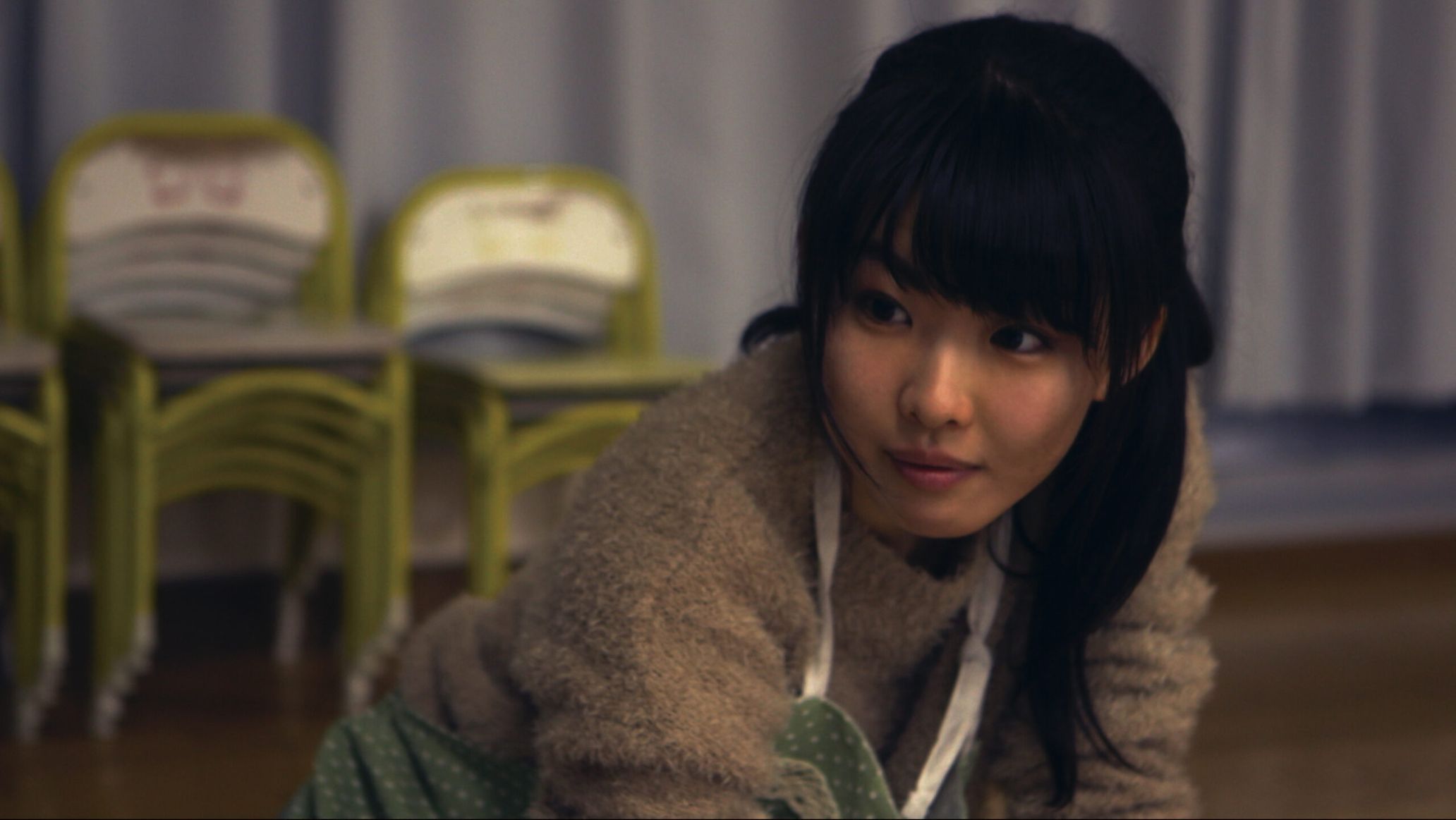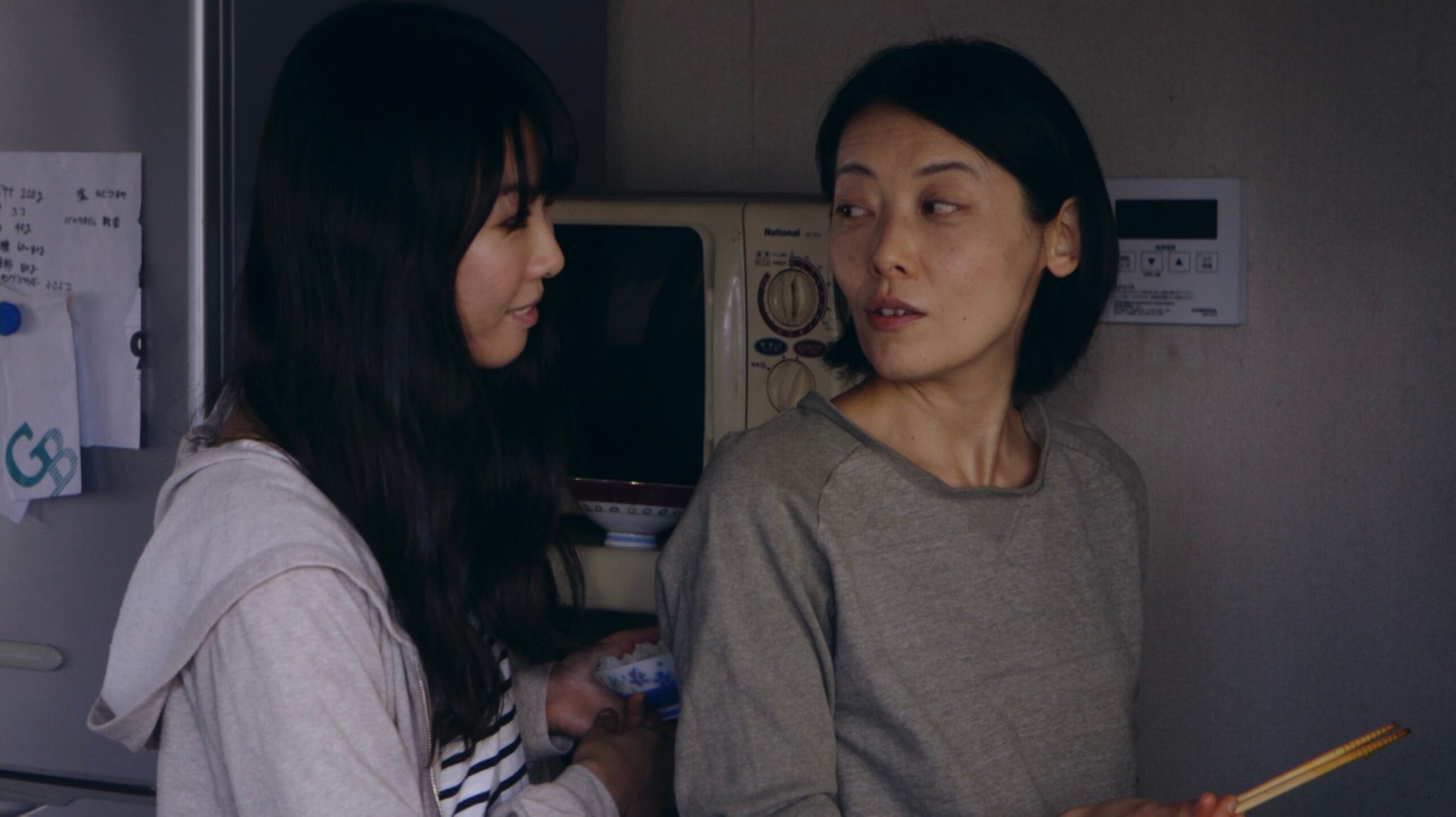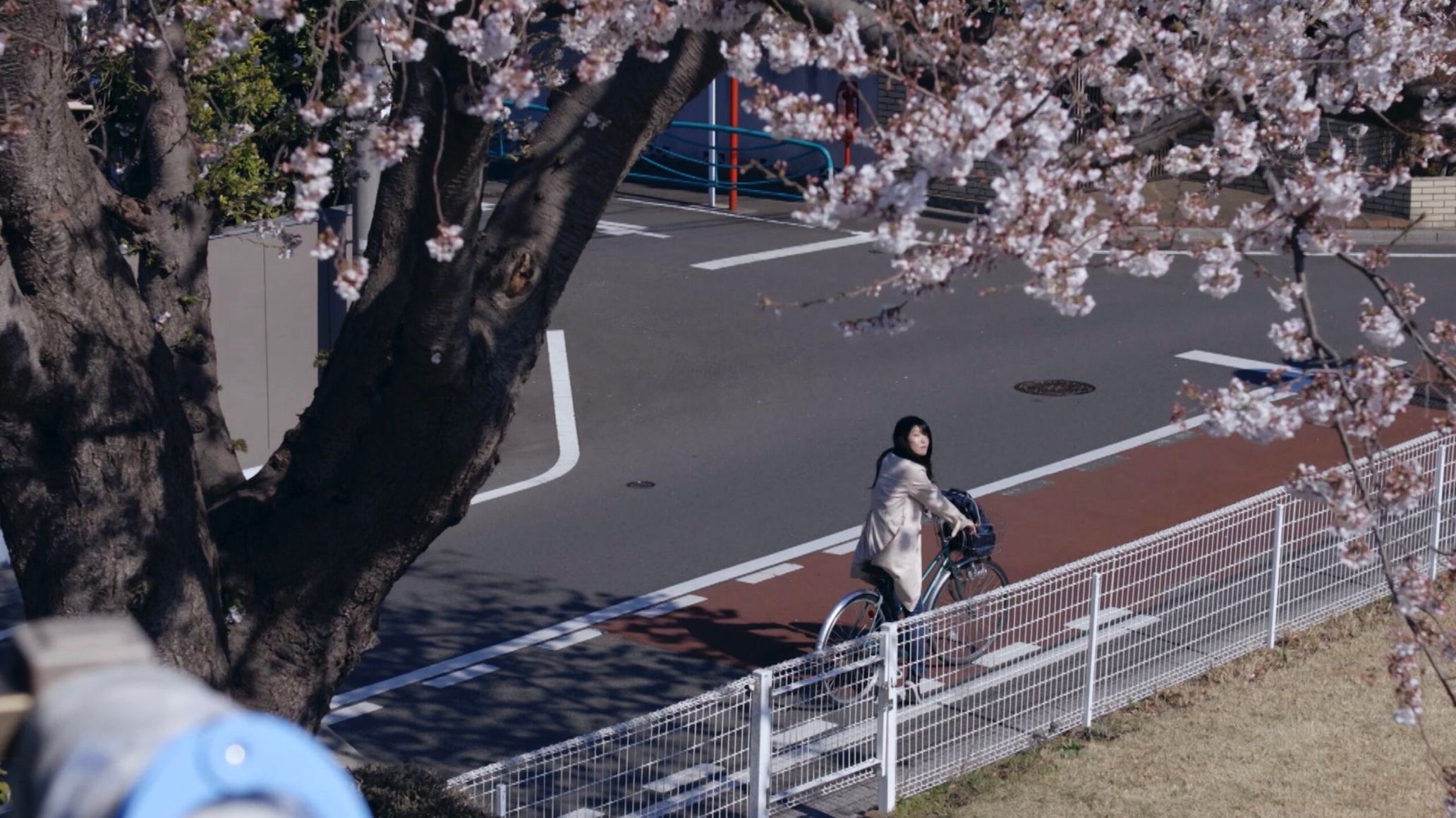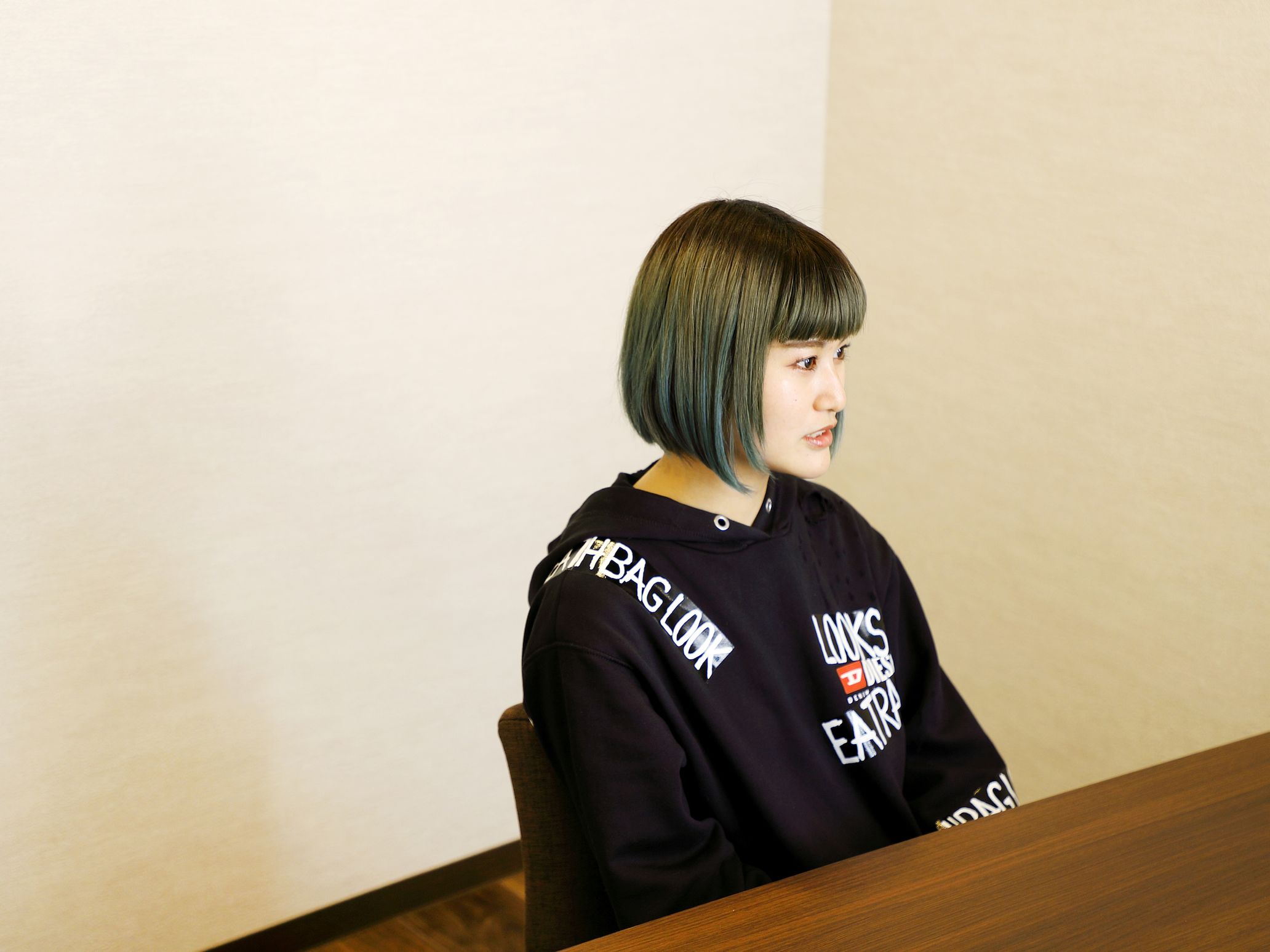Japanese filmmaker Aya Miyazaki made the first feature-length film, “Good-bye”.
The main character Sakura Ueno (Mayuko Fukuda) lives with her mother and they get along well. The reason Sakura’s father is no longer living with them is not explained. At work, Sakura meets a man, which triggers a gradual change to her relationship with her mother and an eventual disintegration. While “disintegration” may sound negative, it was a way for Sakura to become independent from her mother and a necessary step to grow. The film portrays the subtle changes in Sakura’s feelings and her sadness as a daughter. However, the separation also leaves a sense that Sakura will be starting a new life.
Miyazaki said that she didn’t grow up going to see films. We asked her about her career and the film.
In My Film, I Want to Highlight the Motifs Than the Narrative.
“I started to shoot the film when I was in my third year of college. My major was clinical psychology. I was not familiar with films and never even thought of becoming a filmmaker. It all started when I enrolled in a film course, which was offered to all students, and was taught by the film director, Hirokazu Kore-eda. I was not even a cinephile. I decided to take the course thinking casually that it would be good to be exposed to something that I was not familiar with, in Tokyo, a place that I hardly knew at that time. In my junior year, I shot “Yogoto”. Then, I wanted to make a film again and shot “Good-bye” in my senior year.”
“Kore-eda shared the proposal of “Nobody knows” (2004) in his class. Then, the students were asked to follow his example and write a proposal and present it in the class. We had to come up with an idea for a film along we why we wanted to make the film, and the tone of the film. We also needed to include any films that were used as reference and a simple plot. Kore-eda’s proposal was about five pages. Normally, any films start with a proposal. Since I was not familiar with films so much, I didn’t come up with a narrative. I had motifs that I wanted to feature. In “Yogoto”, I wanted to depict the drains and the tangled hair in them. That is how I started to tell the story and I managed to complete the film.”
In the film, there are frequent scenes of meals. In general, these scenes include casual conversations among the characters and portray their daily lives. It also symbolizes the harmony or discord of the family. It’s a reflection of Miyazaki’s desire to portray motifs that she had in mind.
“In “Good-bye”, I feature breakfast and sexual love as motifs. When I was thinking about how to portray the sexual love in the film, I came up with the morning scene. We tend to associate sexual love with night time, but as the expression ‘coffee at dawn’ exists in Japan, I thought there is more intimacy between the lovers in the morning than at night. That’s why I decided to set the symbolic scene in the morning. I also think that meals reveal the most of people’s inner self. That is why there are many meal scenes in the film. It’s interesting to see how each family is so different when it comes to meals served on the dining table. And, when you eat with someone, it exposes the person’s nature including their habits by the way they chew their food, use their chopsticks, and so on. I thought human relations become very real in dining scenes. That is why I wanted to include a scene with a meal when portraying sexual love.”
How did you come up with the title of the film “Good-bye”, which correlates with different types of partings in the film?
“The original title of the film was Imitating the Morning as I wanted to portray the morning in the film. Then, I started to think about a title that is easier to remember and fitting to the story. I remembered that my favorite band Sakanaction and author Osamu Dazai have work that are titled “Good Bye”. It’s a common word, but I thought it suited the film very well. In this film, I depict the disintegration and parting of a family, but I also want to show how the family is reinventing itself. Good-bye means parting, but since it includes the word ‘good’, it does not have the negative connotation. The family falls apart, but it’s not necessarily a negative thing and it could be a beginning of something new, a new path, and a departure. I wanted to infuse these thoughts into the title. Once the title was decided, I felt that the film became more powerful. There is a memorable line by Ai-chan, one of the children at the kindergarten, which was inspired by the title.”
The Audience Can Say, “I Didn’t Get It.” That is the Point.
Miyazaki went to Mayuko Fukuda directly and asked her to play the main character. When the film was shot, Miyazaki was still a college student. It was not guaranteed that the film would be released in a theatre. The film was self-financed. But, Miyazaki had the power of persuasion. In fact, Fukuda’s acting of Sakura is outstanding.
“I had Mayuko Fukuda in my mind when I wrote the main character Sakura in “Good-bye”. I have seen her work since she was a child actor, I thought she was skillful and also calm. I thought she would be perfect for the main character as Sakura is good at everything, but lacks enthusiasm. In the film, she starts to get passionate as she starts to look for her father. I could not imagine anyone else to play Sakura. I also wanted to see how Fukuda-san transforms from a young girl to a woman. When I was shooting the film, I put a distance between her and me. I wanted Fukuda-san to maintain her unique image and Sakura’s coolness and the sense that it’s hard to figure out what she is thinking in her mind. I didn’t focus so much on the characters as my emphasis was on motifs. I think that approach ended up bringing out Sakura’s personality in a good way.”
“Some audience said, ‘I didn’t get the film’, but that was the point I wanted to make. I don’t want people to empathize with Sakurai or the story. Getting audience’s empathy is one of the benchmarks for filmmakers, but I don’t want that to be the goal of my work. As for my work, I would prefer a sense of ambiguity in audience’s mind to audience saying ‘the film was fun.’ What is important for me is to convey the ambiguity than expressing everything. I know it does not sit well when the audience sense that the dialogue between Sakura and her mother is not in sync. The relationship between the mother and daughter turns into a confrontation between two women and it’s a big change, but it’s not told in the film at all. I could have explained why the father is absent at home, but I omitted it. As the story unfolds, the season changes from winter to spring, and I turned my work into something disconcerting by not explaining everything.”
Filmmaking is Hard, but I Don’t Want to Give Up
Nowadays, Miyazaki works for a film production company. I asked her about her thoughts on working on films directed by others and her plan for the future.
“I am very much an introvert and have lived in my own world without achieving anything. I started to make a film so that I could learn about things that are stimulating or unknown to me by getting involved with many people. As I said in the beginning, I didn’t have any affinity to films and had no idea about film theory. That enabled me to do what I wanted to do freely. That fact that I could make the film in a casual manner turned out to be my strength.”
“I now work for the production department of a film company and I certainly feel that filmmaking is tough. It is truly a backbreaking process. When we are making a big budget film, I pour all my energy into what is in front of me and I sometimes cannot even enjoy the film itself. Even so, I still like the filmmaking process and feel strongly that I want to continue working in the film industry. When I review the production report of “Good-bye”, one day, I wrote ‘I only have love for this film.’ And the following day, I wrote ‘what do I want to achieve by taking on all this hardship.’ I was ambivalent. I started out on my own wanting to shoot a film. I got staff members to work with me and it was a tremendous pressure as it was really hard for me to deal with many people. But, in fact, I didn’t dislike the situation. I am not sure how “Good-bye” will be remembered by the audience, but I hope I can continue making films.”
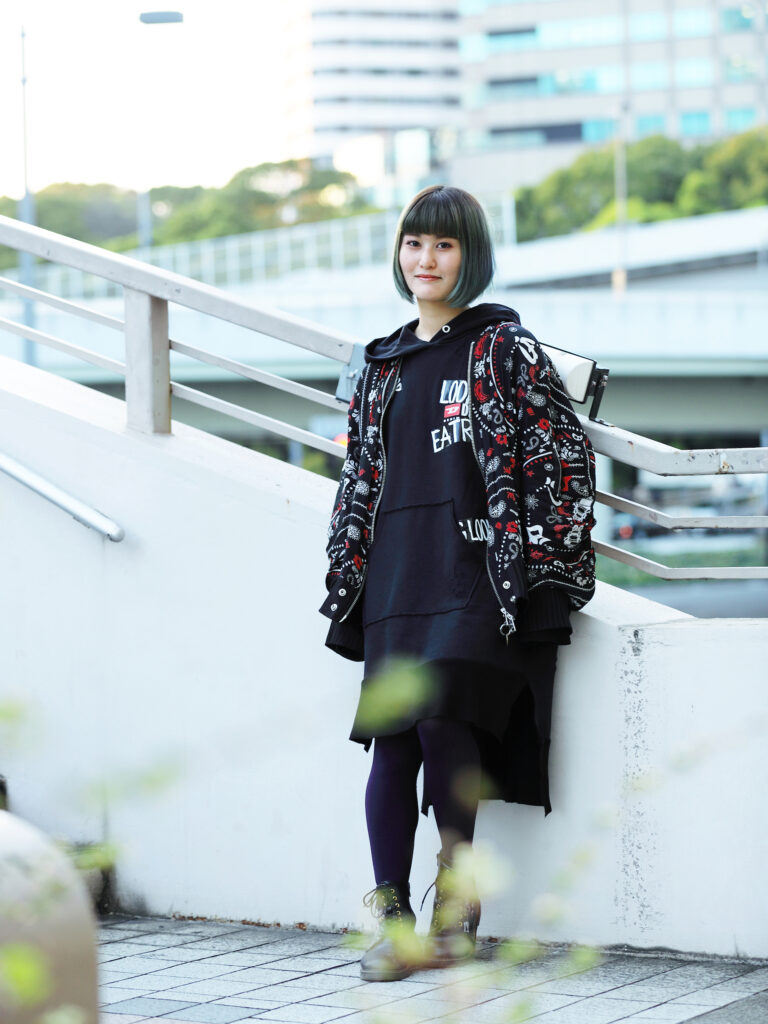
Aya Miyazaki
Miyazaki’s short film “Yogoto” (2017), which she directed while in college, won the Actor’s Award at the 30th Waseda Film Festival and was an official selection at the 7th Ca’ Foscari International Short Film Festival. She shot her first feature-length film “Good-bye” (2017), when graduating from college. The film was nominated for the Indie Forum section of the 15th Osaka Asian Film Festival and the Un Certain Regard section of the 21st TAMA NEW WAVE.
Photography Yuji Sato
Translation Fumiko Miyamoto



